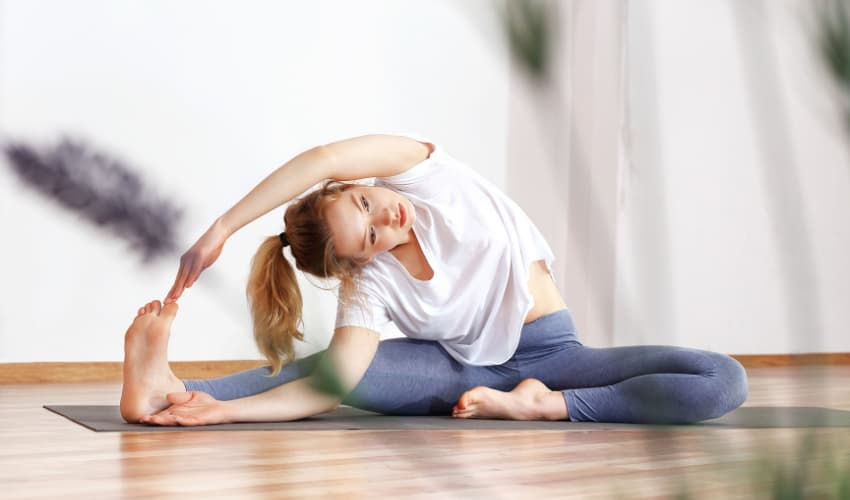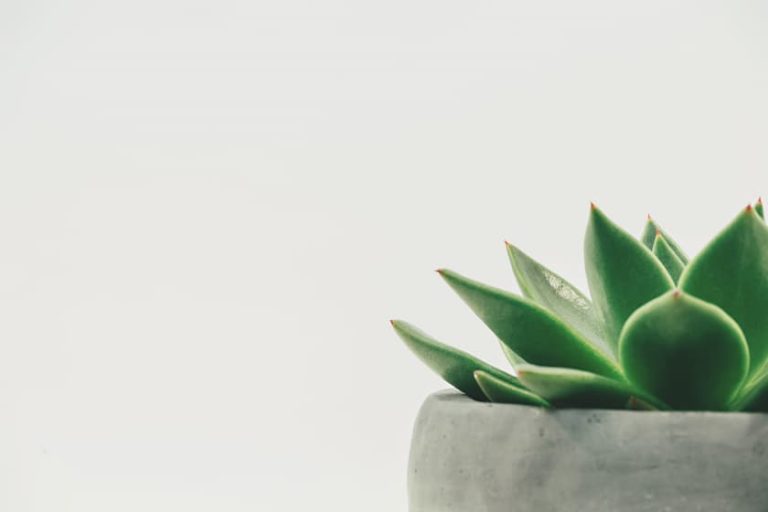Hatha yoga is a branch of yoga that focuses on physical postures and breathing exercises. It is one of the world’s most widely practised forms of yoga and is known for its ability to promote physical strength and flexibility, mental clarity, and relaxation. Hatha yoga is often considered a “gentle” form of yoga, making it accessible to people of all ages and fitness levels. Hatha yoga brings balance and harmony to the body, mind, and spirit. The practice typically involves holding postures for several minutes, often with props such as blankets, blocks, and straps to help the body move into the correct alignment.
Hatha Yoga
Hatha yoga originated in ancient India, where it was developed as a form of physical and mental discipline to prepare the body and mind for meditation. The word “Hatha” is derived from the Sanskrit words “ha,” meaning “sun,” and “tha,” meaning “moon,” and it is believed to refer to the balance of opposing forces in the body and mind.
The earliest written records of Hatha yoga can be found in the texts known as the “Hatha Yoga Pradipika” and the “Gheranda Samhita,” which date back to the 15th century. These texts outlined the basic principles and practices of Hatha yoga, including asanas (postures), pranayama (breathing techniques), and shatkarmas (purification practices).
Hatha yoga was traditionally passed down from teacher to student. It was primarily practised by a small number of ascetics and yogis who lived in isolation in the forests and mountains of India. In the late 19th and early 20th centuries, Hatha yoga became more widely disseminated outside India. It was popularised by figures such as Sri Tirumalai Krishnamacharya, Sri K. Pattabhi Jois and B.K.S Iyengar.
Today, Hatha yoga is one of the world’s most widely practised forms of yoga and is popular among people of all ages and fitness levels. It is often taught in studios, gyms, and community centres and is available in various styles and formats, including group classes, workshops, and teacher training.
Hatha Yoga Pradipika
The Hatha Yoga Pradipika is one of the most important texts on the practice of Hatha yoga. It was written in the 15th century by the Indian yogi Svatmarama and is considered a classic manual on the discipline of Hatha yoga. The text contains four chapters, which cover the following topics:
- Asanas: The first chapter describes 15 asanas (postures) that are considered essential for the practice of Hatha yoga. These postures are designed to prepare the body for practising pranayama (breathing techniques) and meditation.
- Pranayama: The second chapter describes various pranayama techniques, including the proper techniques for inhaling, exhaling, and retaining the breath. It also explains the benefits of pranayama, such as the purification of the nadis (energy channels) and the awakening of kundalini energy.
- Mudras and Bandhas: The third chapter describes various mudras (hand gestures) and bandhas (body locks) that are used to control and direct the flow of prana (life force) in the body.
- Samadhi: The fourth chapter describes the ultimate goal of Hatha yoga, which is the attainment of samadhi (a state of deep meditation and spiritual absorption). It also describes the symptoms of samadhi and the dangers of attempting to achieve it prematurely.
The Hatha Yoga Pradipika is considered a seminal text in Hatha yoga and is still widely studied and referenced today by practitioners and teachers of yoga.
Gheranda Samhita
The Gheranda Samhita is another important text on the practice of Hatha yoga. It was written in the 17th century, and like the Hatha Yoga Pradipika, it is considered a classic manual on the discipline of Hatha yoga. The text is divided into seven chapters, which cover the following topics:
- The creation of the universe and the role of yoga in attaining liberation
- The description of the chakras and the nadis (energy channels)
- The practice of asanas (postures)
- The practice of pranayama (breathing techniques)
- The practice of mudras (hand gestures) and bandhas (body locks)
- The practice of kundalini yoga, including the awakening and raising of kundalini energy
- The attainment of samadhi (a state of deep meditation and spiritual absorption)
The Gheranda Samhita also describes different types of yogis, the attainments of each, and the final goal of liberation. It also gives a glimpse into the different kinds of spiritual practices that were prevalent during that time. It is considered a valuable resource for practitioners and teachers of Hatha yoga and is still widely studied and referenced today.
Hatha Yoga Asanas
Asanas (postures) in Hatha yoga and the specific asanas that are practised and vary depending on the teacher and the teaching style. However, some of the most commonly practised asanas in Hatha yoga include:
- Tadasana (Mountain Pose): This standing posture helps to improve posture and balance, and is often used as a starting point for other asanas.
- Trikonasana (Triangle Pose): This standing posture helps to stretch and strengthen the legs, hips, and spine.
- Adho Mukha Svanasana (Downward-Facing Dog): This inverted posture helps to stretch and strengthen the arms, shoulders, and legs.
- Uttanasana (Standing Forward Bend): This standing posture helps to stretch the hamstrings and lower back.
- Setu Bandha Sarvangasana (Bridge Pose): This supine posture helps to strengthen the core and back muscles.
- Bhujangasana (Cobra Pose): This prone posture helps to strengthen the back muscles that open the chest.
- SavasanpractisingPose): This lying down posture is a relaxation pose, helps to calm the mind and body after practicing other asanas.
- Padmasana (Lotus Pose): This seated posture helps to improve flexibility in the hips and lower back, and is often used for meditation and pranayama.
These are some of the commonly known and practiced asanas, but there are many more asanas that make up the practice of Hatha yoga. They may vary based on the teacher, the style of yoga, and the level of the class.
Hatha Yoga Pranayama
Pranayama is an important aspect of Hatha yoga and refers to controlling and directing the breath. Some of the most commonly practised pranayama techniques in Hatha yoga include:
- Ujjayi Pranayama (Victorious Breath): This breathing technique is characterized by a slight contraction of the back of the throat, which creates a soft “ocean sound” when breathing. It helps to calm the mind and increase focus during yoga practice.
- Nadi Shodhana (Alternate Nostril Breathing): This breathing technique helps to balance the flow of energy in the body by alternating between breathing through the left and right nostrils.
- Kapalabhati (Skull Shining Breath): This breathing technique involves rapid and forceful exhalation, followed by a passive inhalation. It helps to purify the lungs and energize the body.
- Bhramari Pranayama (Humming Bee Breath): This breathing technique involves making a humming sound while exhaling, and helps to calm the mind and reduce stress and anxiety.
- Surya Bhedana (Right Nostril Breathing): This breathing technique helps to energize the body by breathing only through the right nostril.
- Chandra Bhedana (Left Nostril Breathing): This breathing technique helps to calm the body by breathing only through the left nostril.
These are some of the commonly known and practiced pranayama techniques, but there are many more that make up the practice of Hatha yoga.
Hatha Yoga Shatkarmas
Shatkarmas are a set of purification techniques in Hatha yoga that are used to cleanse the body and prepare it for the practice of asanas (postures) and pranayama (breathing techniques). Some of the most commonly practiced shatkarmas in Hatha yoga include:
- Neti: This technique involves cleaning the nasal passages with a salt water solution, using a neti pot, or a rubber syringe, to flush out mucus and impurities.
- Dhauti: This technique involves using a cloth to cleanse the digestive tract, by swallowing the cloth and then pulling it out, bringing impurities with it.
- Nauli: This technique involves massaging the abdominal muscles to stimulate the digestive system and eliminate toxins from the body.
- Basti: This technique involves filling the colon with water and then expelling it to cleanse the large intestine.
- Trataka: This technique involves gazing at a steady point, such as a candle flame, for a period of time, to improve concentration and inner vision.
- Kapalabhati: This technique involves rapid and forceful exhalation, followed by a passive inhalation, to purify the lungs and energize the body.
These are some of the commonly known and practiced shatkarmas, but many more make up the practice of Hatha yoga. It is important to remember that these techniques should be learned and practiced under the guidance of a qualified teacher, as improper practice can cause harm to the body. It’s also important to note that some of the above-mentioned techniques can be quite advanced and may require a certain level of physical ability and prior knowledge before attempting them.
Hatha Yoga FAQs:
Q: What do I need to start practising Hatha yoga?
A: To start practising Hatha yoga, you need comfortable clothing that allows for movement and a yoga mat or towel to cushion your joints and provide traction. You may also want to invest in props such as blocks, straps, and blankets to help you deepen your practice.
Q: How often should I practice Hatha yoga?
A: The frequency of your practice will depend on your individual goals and schedule. Some people prefer to practice daily, while others may practice a few times a week. Consistent practice is key to seeing progress and benefits.
Q: Is Hatha yoga suitable for people of all ages and fitness levels?
A: Hatha yoga is considered a “gentle” form of yoga and is accessible to people of all ages and fitness levels. Modifications and variations of the postures can be made to accommodate injuries or physical limitations.
Q: What are the benefits of practising Hatha yoga?
A: Some benefits of practising Hatha yoga include increased flexibility, strength, and balance, improved mental clarity and relaxation, and reduced stress and anxiety.
Q: Can Hatha yoga help with specific health conditions?
A: Hatha yoga benefits various health conditions, including back pain, anxiety, and depression. It is always best to consult your healthcare provider before starting any new exercise program, especially if you have a pre-existing health condition.
Q: Do I need to be able to touch my toes to practice Hatha yoga?
A: No, you do not need to be flexible to start practicing Hatha yoga. The practice is designed to help increase flexibility and range of motion over time.
Ayurah Spa & Wellness Centre
Ayurah Spa & Wellness Centre, offering a mind balanced, body rejuvenated journey of well-being. Ayurah Spa is a sanctuary that takes a results oriented approach to wellness, with rejuvenating spa treatments and spa therapies.
Wellness is a journey; an evolving process of the current condition of the mind, body and spirit. Ayurah Spa looks forward to supporting you in your quest for optimal relaxation, health and wellness.
Complimentary hatha yoga sessions are available Mon to Sun for all staying guests at Aleenta Phuket Resort & Spa.
Related Articles
- Ashram Yoga: A Journey of Self-Discovery
- Yoga Retreats, Stretch Your Body and Mind
- Combining Hatha Yoga with Meditation Practices
- Vipassana Meditation: A Journey to Inner Peace
- Yoga Nidra: An Introduction
AYURAH SPA & WELLNESS CENTRE
33 Moo 5, Khok Kloi,
Takua Thung, Phang Nga
82140 Thailand
T: +66 (0) 76 580 339











